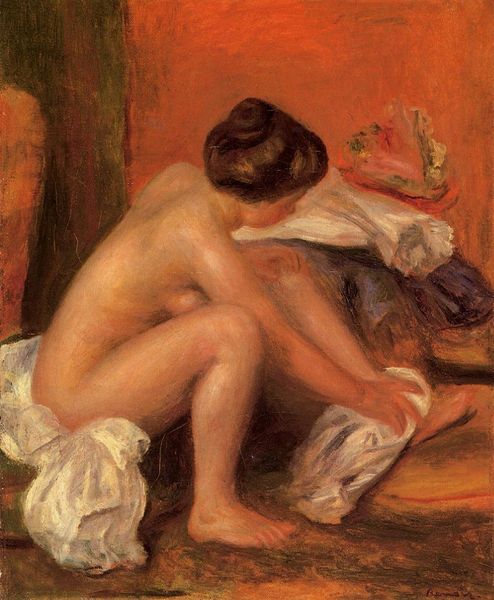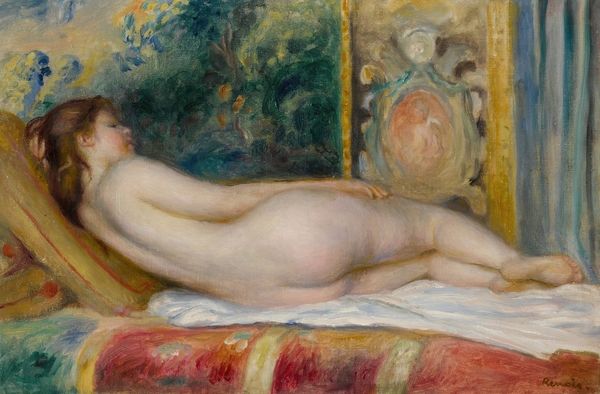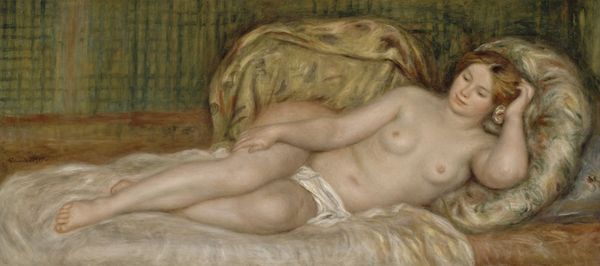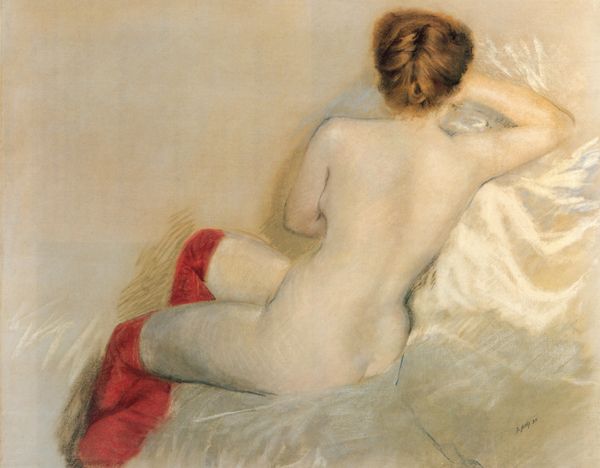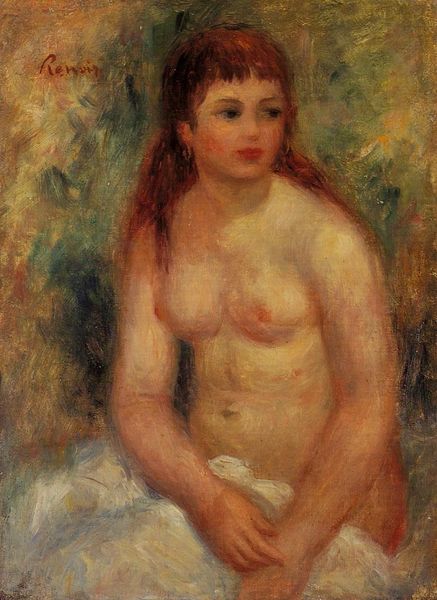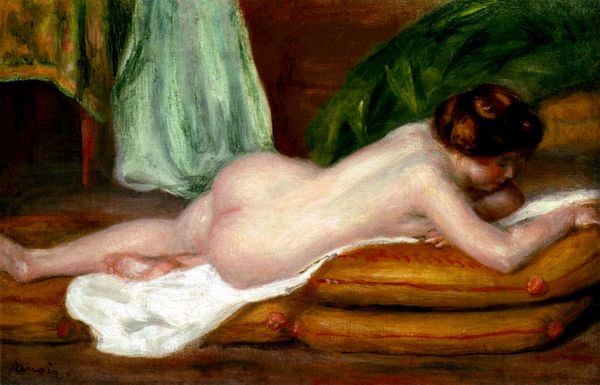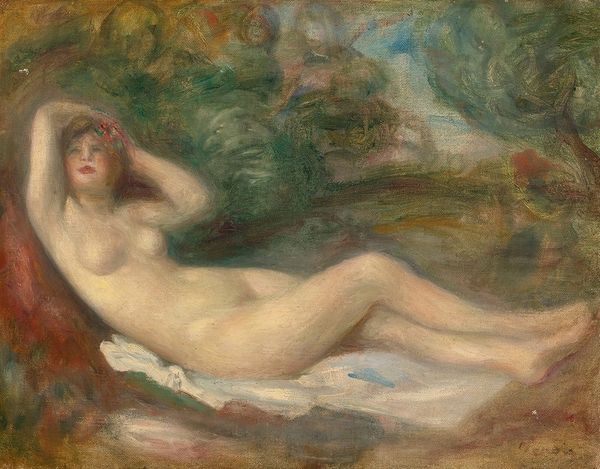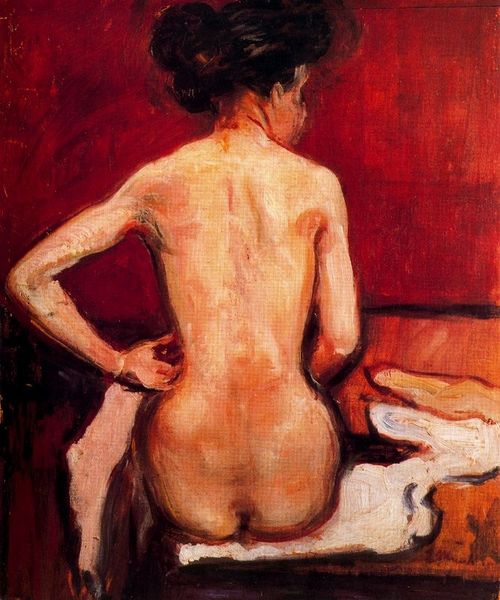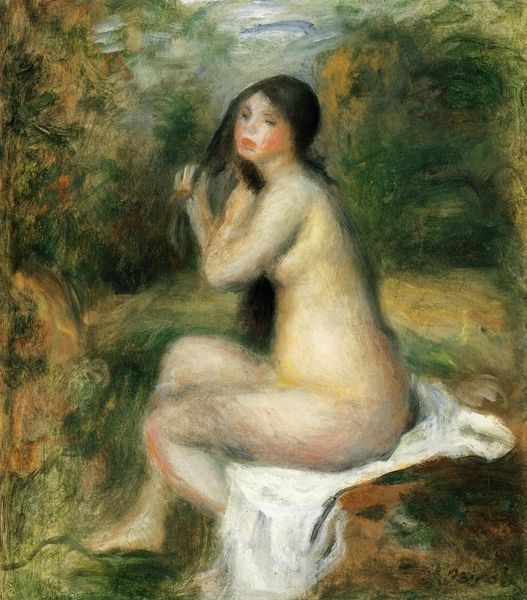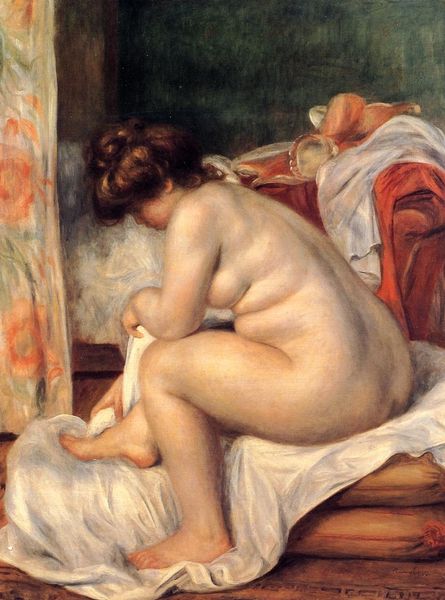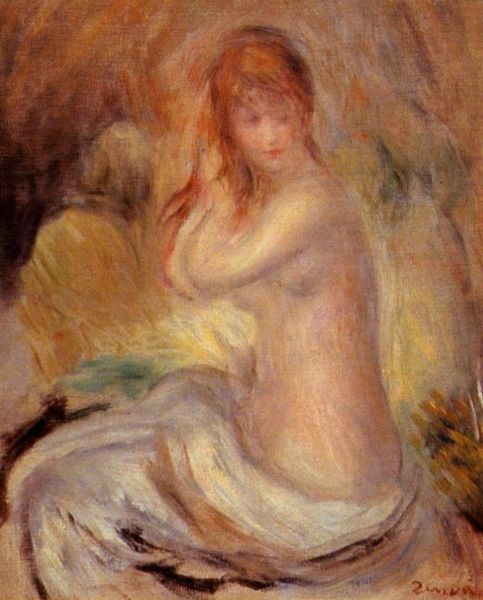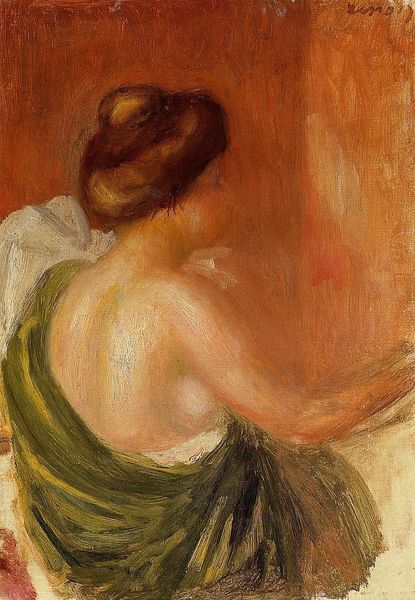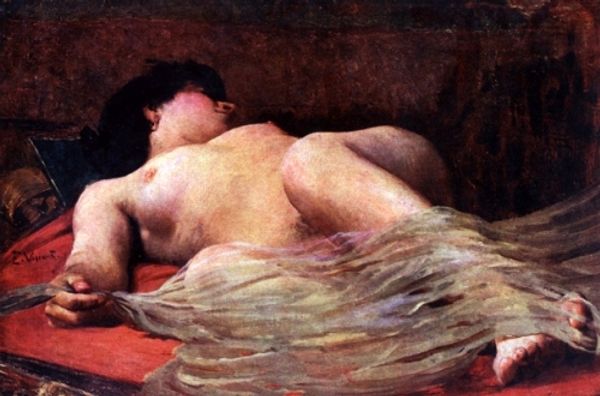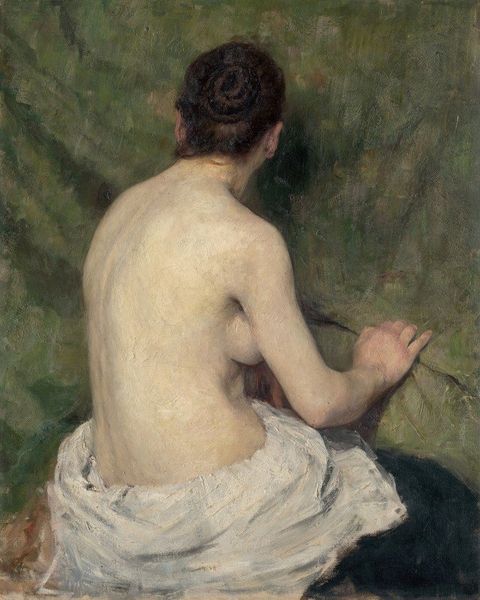
Copyright: Public domain
Editor: Here we have Renoir's "Reclining Model," created in 1906 using oil paints. The muted colors give it a very intimate and almost dreamlike quality. How would you interpret this work in its historical context? Curator: It’s interesting you mention the intimacy. Late Renoir, like this piece, departs significantly from his earlier Impressionistic works. While still embracing sensuality, it is crucial to analyze how this image functions within the evolving socio-political discourse surrounding the female nude. Editor: Can you elaborate? Curator: Certainly. In the early 20th century, the female nude in art was at a critical juncture. The rise of photography challenged painting’s traditional role, while societal norms and debates around female representation became increasingly complex. How do you see this work engaging, or perhaps not engaging, with those debates? Editor: I guess I hadn't considered how society's views on the female form might affect art interpretation so directly. The art world influenced society and the inverse. Curator: Exactly. Renoir here presents a very specific type of idealized woman. We must ask ourselves whose gaze is being prioritized. Is this meant to celebrate the female form or is it perpetuating a particular male fantasy, something Impressionism was often criticized for? Editor: That's a compelling point. Seeing it now, it makes me rethink my initial reaction. I learned it’s key to look beyond just aesthetics and understand the societal forces shaping art. Curator: And by extension, how art also shapes society. Considering these elements adds depth to our understanding and appreciation.
Comments
No comments
Be the first to comment and join the conversation on the ultimate creative platform.
